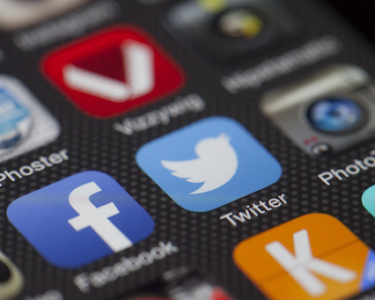The world has changed a lot since the outbreak of the new coronavirus, and the retail industry was not unaffected. As retail companies begin to pick up their business after the 2020 lockdowns, innovations have emerged to make selling products easier, safer, and more profitable.
With so many solutions available, it pays to know which ones have been tried and tested to provide a much-needed boost in sales and cost-efficiency in retail. Here are the five technologies that are shaping retail businesses amidst the “new normal.”
Table of Contents
1. E-Commerce POS
E-commerce saw a significant surge during the 2020 pandemic, primarily due to the recommended safety measures that limited consumer access to in-person shopping. This forced business owners to consider online shopping as an alternative to boost sales even as malls and physical stores close during the lockdown.
As the business world begins to pick up its pace in a post-COVID-19 world, these platforms become even more crucial for the retail industry. Indeed, some companies – particularly those that weren’t ready to offer that “online experience” – struggled during the pandemic. However, many found themselves with higher earnings, all thanks to e-commerce innovations.
E-commerce is not new – just look at how much eBay and Amazon have grown through the century. It has become more of a necessary rather than alternative option for businesses today.
Even if your business doesn’t typically cater to online customers, there is a great chance you will eventually have to adjust to the new normal, which is to have both in-person and online options available. That said, technologies related to e-commerce (such as a point-of-sale or POS system tailored for retail) have become a sought-after solution.
Besides making it possible to cater to online customers, online POS systems also allow businesses to integrate and synchronize the two domains for more straightforward transactions, promotions, and inventory processing.
2. Virtual Shopping Experience
While society is slowly but surely overcoming the onslaught of the COVID-19, customers have subconsciously learned to rely on a less physical and more virtual shopping experience.
Of course, this isn’t limited to just browsing on mobile devices. Businesses can now offer a more immersive virtual shopping experience with the help of augmented reality or AR.
AR technology is one of the leading innovations that have become quite useful in many industries. Not only does it offer a modern entertainment and gaming experience, but it also helped shopping and retail overcome the challenges in a post-pandemic world.
Global research and advisory firm Gartner forecasted the rise of augmented reality to more than 100 million customers by 2020 and was proven right once the pandemic ensued. Since then, more AR customers have emerged, recording a 90 percent increase in the same year the world was struck by the pandemic.
AR can be used to support the “try-before-you-buy” experience, which was initially only possible with in-person shopping. Today, consumers can already test, fit, or try out products before paying for them while adhering to health mandates.
Here are some examples of AR application in retail:
- Digital furniture placement for interior design and indoor landscaping stores
- Makeup testing for cosmetic stores and outlets
- Apparel fitting for fashion companies
Besides mobile applications, AR can also be used inside the store to lower touchpoints and, ultimately, reduce virus transmission.
The perfect example of this is virtual fitting rooms. Instead of a traditional fitting room, shopping malls and clothing stores can let their customers try out clothes and outfits using AR-powered high-definition screens.
With the help of a live camera feed and digital content, AR technology can help users see what is displayed on their mobile devices as part of the real world.
3. RFID
Another viable technology that retail businesses should consider investing in is RFID or radio-frequency identification.
This isn’t new technology, though it has been shrugged off because of the reliance on manual and traditional inventory and purchase fulfillment steps done in-store. However, the age of online shopping increased the need for better inventory accuracy, with the acceptable rate increasing from 70 percent to near perfect at 99 percent.
This is where RFID solutions in Dubai (and everywhere else in the world) became necessary.
Retailers that have been reluctant to adopt this technology eventually gave in as it is the only precise method for both in-store and online shopping.
Before retail companies relied heavily on online stores, they were okay with 70 percent inventory accuracy. They can only sell what’s in the store, after all.
But this is no longer enough now that people can purchase from anywhere in the world. If a promise of shipping or store pickup within the same day is made, then stores need to stay on top of the actual product count.
And while it is possible to play it safe by promising a few days more in preparation, this could be much like setting your company up to remain second-best in the market.
Aside from ensuring that inventory is sufficient, RFID can also help business owners monitor product movement through the entire purchase process.
4. ESL
Another retail technology that has become much needed during the “new normal” is electronic shelf-labeling (ESL).
Much like e-commerce, it has been around for quite some time now, even though it only began gaining traction across the retail industry after the emergence of the COVID-19 pandemic. This is because ESL helps reduce the touchpoints inside the store, making retail stores safer for both customers and employees.
Here’s how it works:
- ESL systems display product pricing digitally, allowing changes to be made from a remote central server.
- Since it can be accessed remotely, business owners or managers do not have to go around the store and update tag prices whenever the need arises (e.g., promotional offer or SRP updates).
5. In-Queue Checkout
The primary goal of tech trends in the retail industry in this post-COVID-19 world is to reduce direct and indirect human contact. This includes reducing the need for customers to touch surfaces in stores.
Keeping their customers’ safety in mind, a food retailer in the United Kingdom implemented a unique on-the-spot payment system that lets customers check out their purchases while on queue. Using a handheld device, a staff member takes contactless payments, reducing the number of customers lining up and reducing the size of crowds.
This technology has become a vital part of the company’s broader effort to make in-store shopping more convenient, efficient, and safe.
New Normal, Business as Usual
Although the COVID-19 pandemic impacted the retail industry greatly, it is possible for companies to run their business as usual. The key is to invest in the right technologies, especially those that help shape the industry in the “new normal.”
AUTHOR BIO
Vic Bageria is the Founder and CEO of Sávant Data System LLC, a retail solutions and services provider focused on empowering businesses with progressive technology solutions such as People Counting and In-Store Analytics to improve operational efficiency and profitability (such as provided by Xpandretail powered by Savant). Vic is an award-winning entrepreneur and visionary, with experience in building recurring revenue technology businesses, who has mastered the intersection of technology, consumer marketing, customer behavior and instore insights.




